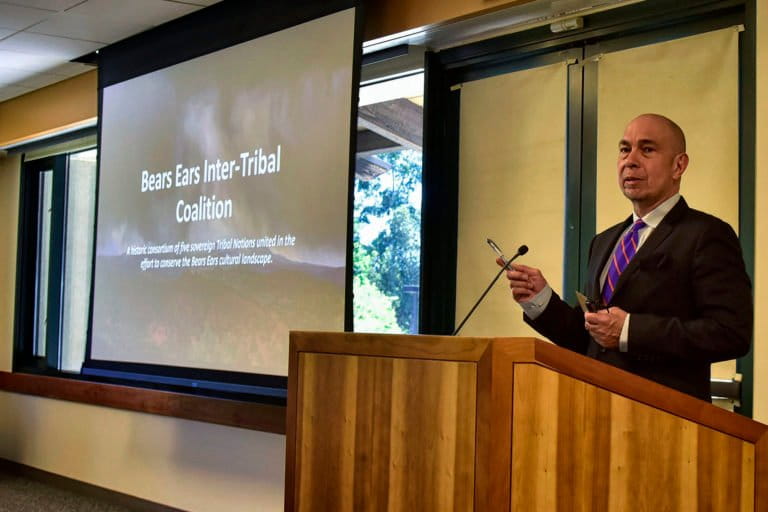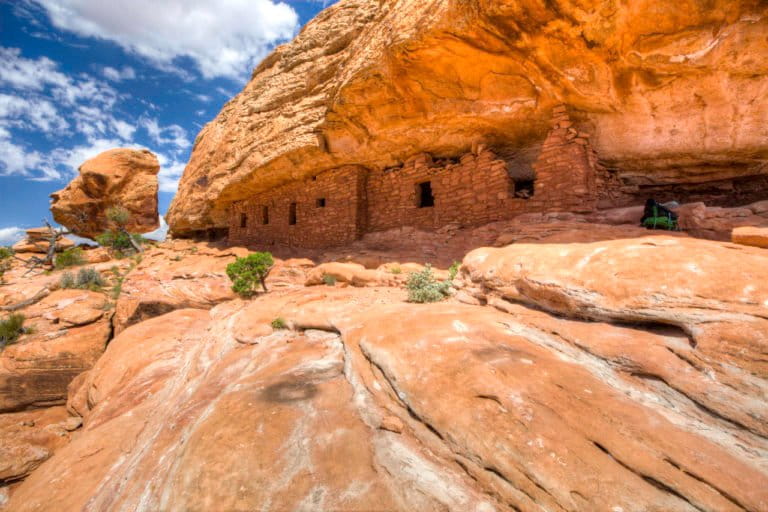In the past year there’s been a lot more talk about stakeholder inclusivity in the conservation sector. The combination of the social justice movement arising out of George Floyd’s killing in May 2020 and exposés of discriminatory practices has put a brighter spotlight on conservation’s legacies of colonialism and treatment of local and Indigenous communities in and around protected areas, among other issues. But how would conservation actually transform its practices?
Patrick Gonzales-Rogers, the Executive Director of the Bears Ears Inter-Tribal Coalition, says increasing the representation of Indigenous peoples in the leadership of conservation institutions would be a good place to start addressing structural issues around rights, race, and consent in the conservation sector.
“If you were to go through the executive staff and the board of directors for seven largest conservation groups, you would find a serious lack of inclusion,” Gonzales-Rogers told Mongabay. “I did a manual count among these groups and found there are over 200 such positions in the seven largest conservation groups. You know many tribal members of the 200 something board members are there? There are six; two of them are mentioned twice.”
“There is a vast dearth of people of color represented on these boards and executive leadership roles. This is important because of corporate governance: this is where objectives are created, assets are aligned, and deliverables are prioritized. So, the more you can get people of color, the more the assets and resources can be realigned to these communities.”

Gonzales-Rogers says that increasing Indigenous representation at the highest level of conservation groups is not only a just thing to do; it would improve conservation outcomes.
“99% of public lands are west of the Mississippi. Almost all of those public lands are within Indian country or intersect against Indian country,” he said. “Organizations recognize that tribes are good land managers. These have some really relevant experience in some of the longest, most storied, and largest contiguous pieces of land in America.”
“Tribes are working board members. They provide a direct insight into what works and what doesn’t work, and they’ve been doing it since time immemorial. And this is true of other kinds of groups of color.”

Gonzales-Rogers’s views are borne out of a long career working at the intersection of Indigenous rights and natural resources. A Native Polynesian and Samoan from Hawai’i, Gonzales-Rogers became associate general counsel to the U.S. Senate Indian Affairs Committee after completing law school. He worked in a variety of roles advancing Native objectives before ending up as the Executive Director of the Bears Ears Inter-Tribal Coalition, a consortium of Indigenous nations — the Hopi Tribe, Navajo Nation, Ute Mountain Ute Tribe, Pueblo of Zuni, and Ute Indian Tribe — that formed in 2015 to conserve 770,000-hectare (1.9 million-acre) Bears Ears cultural landscape in San Juan County in southeastern Utah.
Upon forming, the Coalition immediately submitted a proposal to President Barack Obama seeking the designation of Bears Ears as a national monument. That came when the 547,000-hectare (1.35 million-acre) Bears Ears National Monument was established by presidential proclamation on December 28, 2016. But less than a year later, President Donald Trump reduced its extent by 85% to 81,700 hectares (201,876 acres). Trump’s action provoked public outcry and three lawsuits from the five Coalition tribes, a group of eleven environmental groups, and the clothing company Patagonia. Those suits were consolidated in January 2018.

Today the fate of the Bears Ears National Monument is up in the air, but Gonzales-Rogers says there has been a dramatic shift since Joe Biden won the presidency.
“Now we have a reset. Within days of Biden winning the election and then getting a transitional transition team in place, there was already a reach out,” he said, noting “there was a day-and-night difference in terms of the responsibility and the basic engagement” between the Trump and Biden Administrations.
“Yes, the Bears Ears represents one of the premier public land’s issues. And then when you intersect it against environmental social justice, it’s probably the premier issue because you have the combination of these two big puzzle pieces. But the reflection of what is due to the tribes was not lost on the Biden administration. And there was an immediate kind of change in the complexion, constitution, and comportment on how they were going to engage the tribe.”
Gonzales-Rogers talked about Bears Ears, Indigenous rights, the conservation movement, and more during a February 2021 interview with Mongabay founder Rhett A. Butler.

